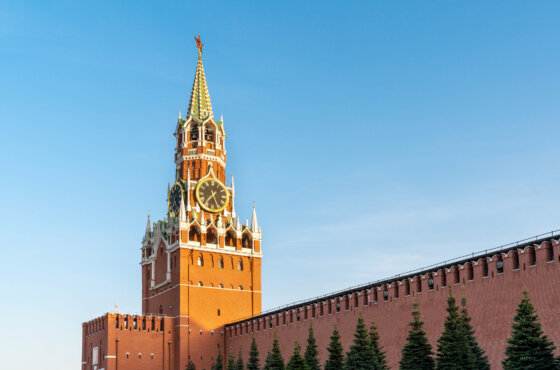Scientists warn of the threat of 'time-traveling pathogens': they can greatly harm people and the planet
Scientists have suggested that as the climate warms, "time-traveling pathogens" released by melting permafrost in the Arctic could pose a serious threat to modern ecosystems. Writes about it CNN.

Photo: IStock
Permafrost is a hard layer of frozen ground composed of soil, sand, and rocks in high latitudes or high mountain areas such as Greenland, Alaska, Siberia, the Tibetan Plateau, and northern Canada. This ice sheet keeps microbes that remain dormant for long periods of time, but a warmer planet could create the right conditions for these pathogens to reemerge, according to a new study.
To better understand the possible environmental implications, an international team of researchers digitally simulated the interaction between an ancient virus and modern bacteria in a study published July 27 in the journal PLOS Computational Biology.
Through tens of thousands of iterations, the research team tracked how the virus affects the species diversity of the bacterial community. About 1% of ancient viruses have caused major disruptions in ecosystems. The pathogen either increased diversity up to 12%, or, conversely, reduced species diversity by 32%. Virus invaders not only survived, but evolved over time, throwing the system out of balance.
On the subject: In July, the Earth reached a critical point of global warming: how it will change our lives
Bacterial organisms interacted with their environment to compete for space. Competitors that found their niche could reproduce and live in cycles.
In doing so, there were small errors in reproduction that created genetic diversity, resulting in a more complex ecosystem. When the virus entered this environment, like any other parasite, it could only obtain energy from suitable bacterial hosts. The hosts were then unable to obtain the energy they needed to survive or reproduce and subsequently died.
Does this mean that almost a third of people and other living organisms will soon be at risk of death from a resurgent viral disease? No, but lead author Giovanni Strona and co-author Cory Bradshaw said the results add another level of concern to the risks associated with persistent warming.
Invasive species can reduce biodiversity
Over the past two decades, more research has focused on understanding the effects of permafrost melt in Arctic regions, such as a January 2022 NASA study that looked at the effects of carbon release during flash melts, and Jean-Michel Claverie's decade-long study of potentially infectious pathogens trapped in permafrost. permafrost.
Claverie, professor emeritus of medicine and genomics at the Aix-Marseille University School of Medicine, resurrected what he called zombie viruses from permafrost in 2014-2015. As a result, the French scientist and his team reported five new families of ancient viruses capable of infecting amoebas. His research proved that ancient microbes can still be contagious despite having been dormant for tens of thousands of years.
Using this assumption from Claverie's work, Bradshaw, director of the Global Ecology Laboratory at Flinders University in Australia, and Strona, senior fellow at the European Commission's Joint Research Center, developed a simulation to quantify the impact these pathogens might have.
While the 1% of pathogens causing major disruption seems low, 4 sextillion cells emerge from the permafrost every year, Bradshaw says. This is much more than the number of stars in the galaxy.
“One percent of 4 sextillion is a number that most people can't even imagine. There are many possibilities for infection. For one single virus, such a possibility is rare, but there are a lot of potential viruses,” he said.
Bradshaw compared permafrost viruses to any other invasive species. In the real world, most bacterial invasions of ecosystems fail, as reflected in the study. But the reason we still have problems with invasive species, he says, is that there are many introduced species in the ecosystem (living species that are part of unrelated groups outside their natural ranges).
During a successful invasion during the study, a 32% loss in species diversity does not mean that the virus has killed one-third of all bacteria in the digital ecosystem, Strona said. This most likely means that the entire ecosystem has lost 32% of its bacterial diversity.
When viruses infected bacteria and killed their hosts, the consequences for the ecosystem were catastrophic. As Bradshaw said, the resources that existed in equilibrium were simply no longer available, so the remaining species were forced to race for survival. Predators and prey fought to use the remaining resources, throwing the system out of balance. If there were fewer predators consuming prey, the prey thrived, overpopulation occurred, and then they used too many resources. This reduced the prey population. If there were more predators, they would consume too much prey to survive sustainably, with the same result.
The researchers found that the emergence of the virus was the sole reason for such a large fluctuation in species diversity.
The role of carbon emissions
Modern organisms, including humans, have almost no natural defense mechanisms against ancient pathogens. But for scientists, Strana and Bradshaw argue, the study is more of a call to action than a real warning.
“We don’t need to sound the alarm just yet,” climate scientist Dr. Kimberly Miner said.
In her view, there are more pressing issues related to the climate crisis that are much easier to control, such as slowing carbon emissions into the atmosphere.
The study, Miner says, is a great first step in quantifying the risks associated with these unknown variables. But the chance of being infected by these emerging pathogens is still “highly unlikely.”
The regions containing the Earth's permafrost are sparsely populated. If the ancient pathogens somehow managed to escape, they would have a hard time finding people to infect. What's more, Miner said, the permafrost gradually melts over the course of the year at a rate of about 1,2 inches (3 cm) per season, and most of the 4 sextillion cells are released during this gradual thaw.
You may be interested in: top New York news, stories of our immigrants and helpful tips about life in the Big Apple - read it all on ForumDaily New York
She noted that sudden permafrost thaws in the Arctic, sometimes occurring in a matter of days, are “what worries us the most.”
As global mean temperatures rise, these sudden thaws will become more frequent. Following record high temperatures in July, drone footage shows Siberia's largest permafrost crater sinking as ice melts underground.
Strona and Bradshaw emphasized the need for more research to extend the implications of their findings to human or animal populations. Both researchers said their intention was to provide a basis for assessing the risk of biological invaders from a bygone era.
The only preventive action in all of these cases — whether it's sea level rise, deadly heat or new pathogens — is to slow or stop global warming carbon emissions and protect Arctic ecosystems, the study authors say. They believe that without this, cascading environmental effects would no longer be science fiction.
Read also on ForumDaily:
What programs are available to Ukrainians in the USA: how and where they can get help
Don't Buy These 10 Car Models: They Break Down Quickly and Repairs Are Expensive
Influenza, RSV and COVID vaccination season: who and when to get vaccinated
Top XNUMX Cheapest US Cities for Students
Five records that the Guinness Committee no longer accepts, and this is for the best
Subscribe to ForumDaily on Google NewsDo you want more important and interesting news about life in the USA and immigration to America? — support us donate! Also subscribe to our page Facebook. Select the “Priority in display” option and read us first. Also, don't forget to subscribe to our РєР ° РЅР ° Р »РІ Telegram and Instagram- there is a lot of interesting things there. And join thousands of readers ForumDaily New York — there you will find a lot of interesting and positive information about life in the metropolis.












